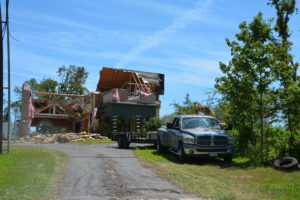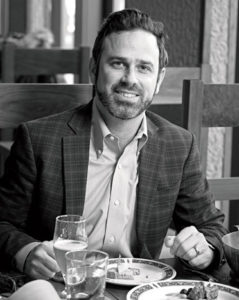Planning for long-term community recovery after a disaster has never been an easy task, but in larger communities with significant planning resources, it can be less daunting. For rural communities that may not have local planning staff or that may suffer from inadequate training and experience, it often seems that the path ahead is strewn with land mines. When there has been no advance preparation for the day of reckoning produced by a serious natural disaster, the swirl of demands surrounding such an event can lead to burnout and confusion. State and federal assistance can often seem as problematic as it is helpful because of paperwork demands, auditing concerns, and the sheer complexity of the overall challenge.
It is extremely important that communities learn from their peers, and that those peers share lessons from similar circumstances. Even in the same state, what works in a large city may have little bearing on the compelling needs of a small town or rural county. Rural communities need to learn from the experiences of other rural communities. They rely far more on the work of volunteers and part-time staff than is typical in urban areas.
For those reasons, it is refreshing to see a new publication from Texas, Emergency Preparedness and Recovery: A Toolkit for Rural Communities. It is available online. At 89 pages, it is not overly long, and sticks religiously to a mission of practical advice. Particularly interesting is how it came about. I have had some involvement in the project that gave birth to this document but was not involved in producing the guide itself. Instead, I served as the keynote speaker for a disaster recovery workshop last October in rural Van Zandt County, about which I wrote in a previous blog post.
Planners4Health, the project that produced the guidebook, is a collaboration between the Texas Chapter of the American Planning Association (APA) and the Texas Public Health Association (TPHA). The two organizations came together in response to an APA program, funded by the Centers for Disease Control, that sought to produce such collaboration on common public health issues between planners and public health officials. In two previous rounds, the two Texas organizations had received the sub-grants from APA’s Planning and Community Health Center to work on healthy foods issues in North Austin and Fort Worth.
For their third project, however, they dramatically shifted their focus to work in a rural area about an hour east of Dallas. On the evening of April 29, 2017, Van Zandt County experienced seven tornado sightings including one EF-3 and one EF-4, both high-powered storms that fortunately did not strike any of the county’s small towns. But the storms inflicted serious damage, and the project to assist the county led to the October 29 disaster recovery workshop in Canton. Much of the work was done by public health student interns from the University of North Texas, in Fort Worth, and planning students from the University of Texas-Arlington campus, under the overall guidance of Melissa Oden, a public health professor from UNT and former president of TPHA. Those students were the backbone of the workshop and collaborated closely with local officials from Van Zandt and neighboring counties.
Much of what this team produced consists of highly usable principles and checklists that are accessible to professionals and volunteers alike. These people need to understand quickly and succinctly what needs to be done. But not just after disaster strikes—the document makes perfectly clear that the wisest strategy for any community, rural or otherwise, is to organize and empower a long-term recovery group before disaster strikes, to avoid wasting valuable time after the event finding the right people, training them on essential procedures, and establishing the legal channels for raising and accepting donations to help the survivors of disasters. In most disasters, the events that follow move too quickly to allow the community to afford such a luxury. Major opportunities can be lost forever while a community is trying to organize its response. Having a long-term recovery planning group in place to meet, discuss scenarios, and become prepared for the eventuality is a much wiser strategy.
The guide also delves into a variety of practical considerations that will then confront this leadership group and others working with them: conducting a needs assessment, case management for disaster survivors, managing volunteers and finances, spiritual and emotional care, animal care, and measuring outcomes, among others. By and large, it is a thorough, sensible document, with which I have only minor quibbles. I do wish they had noted the need to document volunteer hours, whose monetary value can often help in establishing a local match for grants that require such. In discussing long-term disaster impact, I wish they had added environmental impacts to social and economic impacts, though I can also understand being wary of overloading the responsibilities of rural volunteers. The substantial section on animal care is particularly apt for rural communities, where these can include livestock, horses, and other animals in addition to the dogs and cats that dominate more typical urban pet concerns. There is no substitute for knowing your audience.
The guide includes some very useful appendices, one of which outlines roles and responsibilities for local officials. While the guide is already useful beyond Texas, it would be welcome imitation if similar collaborative efforts in other states produced similar guides. Some of the language, for example, that refers to county judges, who are actually chief executives of county governments in Texas, could then be translated to whatever terms apply in other states to make them sound more relevant. I suspect that the Planners4Health organizers in Texas would welcome such flattery as both sorely needed and a high compliment (and complement) to their efforts.
Jim Schwab



